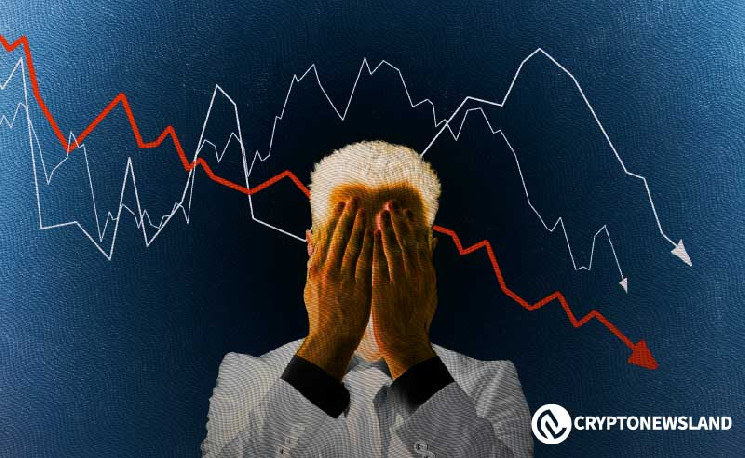Cathie Wood Analyzes VIX Surge, Predicts Potential Market Rebounds Amid Volatility
- Cathie Wood highlights VIX surge as the fourth-highest in 40 years, resembling both 1987 and 2008 scenarios.
- The yen carry trade unwind, driven by U.S. economic data and Japan’s rate hike, is fueling the VIX spike.
- Wood suggests broad-based deflation and misaligned Treasury yields could prompt Fed policy reassessment.
Cathie Wood, CEO and CIO of ARK Invest, recently commented on the sudden surge in the Equity Volatility Index (VIX), which has reached its fourth-highest level in the past 40 years.
This spike, occurring on August 2, 2024, follows a pattern seen during economic events such as Black Monday in 1987, the collapse of Lehman Brothers in 2008, and the onset of the COVID-19 pandemic in 2020.
Wood’s analysis comes amid broader discussions about market corrections, treasury yields, and other economic indicators.
After I recorded “ITK” on Friday, today the VIX (Equity Volatility Index) shot up to 65, the fourth highest level in the past 40 years: after “portfolio insurance” failed on Black Monday in October 1987, Lehman went under in 2008, and COVID hit in 2020. What does this move mean? https://t.co/5upiKbuiWd
— Cathie Wood (@CathieDWood) August 6, 2024
VIX Spike and Historical Context
Wood highlighted that similar spikes in the VIX during past crises created unique buying opportunities, particularly for stocks that suffered during those downturns. For instance, in 1987 and 2020, the sharp increase in the VIX led to substantial rebounds in the stock market.
However, in 2008, the VIX spike was followed by a prolonged decline, with the equity markets not bottoming out until six months later in March 2009. Wood suggests that the current spike may resemble both the 1987 and 2008 scenarios, raising questions about its potential impact on the markets.
Yen Carry Trade and Recent Market Developments
A key factor in the current VIX surge is the unwinding of the yen carry trade. For several years, investors have been borrowing yen at minimal interest rates and reinvesting in higher-yielding U.S. assets. This strategy relied on the continued depreciation of the yen.
However, recent economic data from the U.S., including disappointing employment and PMI figures, coupled with the Bank of Japan’s unexpected interest rate hike, have forced investors to exit these positions. As a result, margin calls are leading to the unwinding of the yen carry trade, which is now impacting macro-oriented investment strategies.
Broad-Based Price Deflation and Treasury Yields
Wood also addressed the issue of broad-based price deflation, noting its growing relevance today. She pointed to the metals-to-gold ratio as a key indicator suggesting that the 10-year Treasury bond yield should be closer to 2%, rather than its current level of 3.8%.
This misalignment raises questions about whether the Federal Reserve’s current rate policy is appropriate. Wood speculated that, under normal conditions, the Fed funds rate might be closer to 1%, unless the economy revisits patterns seen in the early 1900s, when technological booms led to inverted yield curves.




